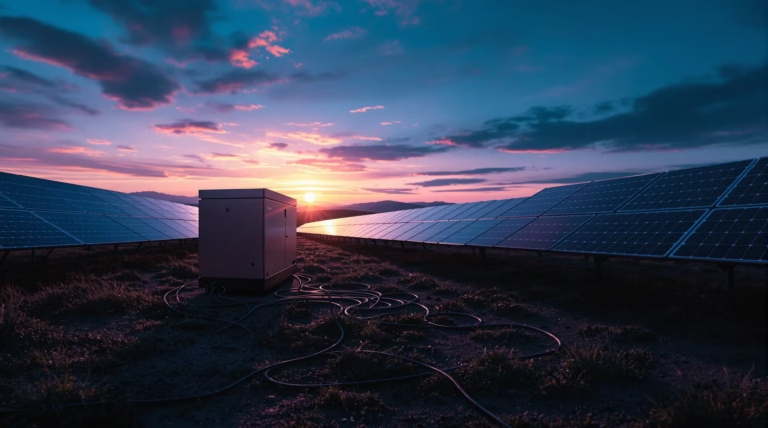Generator vs Solar Panels: Which is the Best Power Solution?
Looking to secure reliable power for your home? The choice between generators and solar panels can significantly impact both your energy independence and financial future. Let’s explore the key differences to help you make an informed decision that aligns with your needs and budget.
Understanding Generators and Solar Panels
When evaluating backup power solutions for your home, understanding the fundamental differences between generators and solar panels is crucial for making an informed decision. Each option offers distinct advantages and limitations that can significantly impact your energy strategy and budget.
| Feature | Generators | Solar Panels |
|---|---|---|
| Initial Cost | $2,000 – $10,000 | $15,000 – $30,000 |
| Tax Incentives | None | Up to 26% in rebates |
How Generators Work
Generators produce electricity by converting fuel into electrical power through a combustion process. When activated, the engine burns fuel to create mechanical energy, which then spins an alternator to generate electricity. This process provides immediate, on-demand power during outages or in areas without grid access.
- Requires constant fuel supply maintenance
- Produces noise pollution and harmful emissions
- Needs professional servicing every 100-200 operating hours
- Has a lifespan of 10-20 years
- Requires regular oil changes and filter replacements
How Solar Panels and Batteries Work
Solar panel systems operate by capturing sunlight with photovoltaic cells that convert solar energy directly into electricity. During daylight hours, these panels generate direct current (DC) electricity, which passes through an inverter to become alternating current (AC) power usable in your home.
- Operates silently with zero emissions
- Requires minimal maintenance
- Lasts 25-30 years on average
- Includes battery storage for continuous power
- Creates sustainable energy independence
Comparing Costs: Generators vs Solar Panels
When evaluating power solutions for your home, the financial aspects often become a decisive factor. Generators and solar panels represent two distinctly different investment approaches—one with lower upfront costs but ongoing expenses, and the other requiring a substantial initial investment that pays dividends over time.
Initial Investment and Installation Costs
| System Type | Equipment Cost | Installation Requirements |
|---|---|---|
| Gas Generators | $500 – $2,500 | Basic electrical wiring |
| Solar Generators | $1,000 – $5,000 | Professional assessment and mounting |
| Complete Solar System | $15,000 – $30,000 | Complex installation with battery storage |
Long-term Savings and Maintenance
The long-term financial picture reveals significant differences between these power solutions. Generators require continuous fuel purchases—a cost that adds up quickly during extended use. During a week-long power outage, fuel expenses can reach hundreds of dollars.
- Solar systems typically pay for themselves within 5-10 years
- Minimal maintenance costs for solar panels
- Battery replacement needed every 10-15 years
- Generator maintenance required every 100-200 hours
- Continuous fuel costs for generators
Environmental Impact of Generators and Solar Panels
The environmental implications of power solutions have become a critical factor in consumer decision-making. The contrast between traditional generators and solar panels extends far beyond cost considerations, particularly regarding their ecological footprints.
| Environmental Factor | Traditional Generators | Solar Panels |
|---|---|---|
| CO2 Emissions | 1.6 kg per kWh | Zero during operation |
| Operational Impact | Direct air pollutants | Clean energy production |
| Long-term Effect | Continuous emissions | Carbon offset in 1-3 years |
Emissions and Sustainability
The emissions comparison between generators and solar panels reveals a stark sustainability contrast. Traditional generators release multiple pollutants directly into the atmosphere:
- Carbon dioxide emissions contributing to climate change
- Nitrogen oxides affecting air quality
- Particulate matter impacting respiratory health
- Equivalent emissions to months of car use during extended outages
- Ongoing environmental impact throughout operational life
Solar power systems demonstrate superior environmental performance with zero operational emissions. While manufacturing solar panels does create an initial carbon footprint, this impact is typically offset within the first three years of operation. Over their 25-30 year lifespan, solar installations prevent significant carbon emissions, making them an increasingly popular choice in environmentally conscious regions like California.
Energy Independence and Reliability
The quest for energy autonomy has become paramount for homeowners seeking reliable power solutions. Solar panels with battery storage offer sustainable independence, while generators provide temporary autonomy during outages. Many homeowners now opt for hybrid systems that combine both technologies for optimal reliability.
Reliability During Outages
- Solar battery systems activate automatically within milliseconds
- No manual intervention required for power transition
- Silent operation maintains communication capabilities
- Continuous power supply with daily solar recharging
- No dependency on fuel availability during emergencies
Achieving Energy Independence
True energy independence requires consistent access to electricity regardless of external factors. Solar systems with battery storage create a renewable energy cycle that operates independently of traditional infrastructure. The most effective approach often combines solar as the primary power source with generators as backup, supported by smart home energy management systems that optimize power distribution and usage.
Financial Incentives and Rebates
Government support for renewable energy significantly impacts the financial equation when choosing between power solutions. While generators rarely qualify for incentives, solar installations can benefit from multiple programs that reduce initial costs by 30-50%. These incentives reflect a broader policy commitment to sustainable energy adoption and long-term economic benefits of reducing fossil fuel dependence.
Government Rebates and Tax Credits
The Federal Solar Investment Tax Credit (ITC) represents a significant financial advantage for homeowners considering solar installation. This program currently offers a 30% tax deduction on total solar system costs. For perspective, a $20,000 solar installation would qualify for a $6,000 reduction in federal tax liability, substantially improving the return on investment timeline.
- Federal tax credit – 30% of total system cost
- State-level direct cash rebates
- Property tax exemptions
- Sales tax exemptions
- Performance-based incentives
- Utility company rebates
The Database of State Incentives for Renewables & Efficiency (DSIRE) serves as a comprehensive resource for identifying available programs in specific locations. Unlike traditional generators, which typically receive no government support, these layered incentives make solar systems increasingly cost-competitive despite higher upfront investments.
Incentives for Solar Battery Installation
Battery storage systems qualify for additional financial incentives beyond standard solar panel benefits. Many states have implemented specific battery incentives, recognizing their contribution to grid stability. Programs like ConnectedSolutions in the Northeast provide performance-based payments for battery systems supporting grid demand management.
| Incentive Type | Potential Savings |
|---|---|
| Federal Tax Credit | 30% of system cost |
| State Battery Rebates | $200-$1,000 per kWh |
| 10kWh Battery System Savings | $2,000-$10,000 |
The Inflation Reduction Act of 2022 enhanced these benefits by confirming battery systems’ eligibility for the 30% federal tax credit, even when installed separately from solar panels. These combined incentives significantly reduce the cost gap between generators and solar battery systems, particularly when considering solar technology’s long-term operational advantages.
Conclusion: Choosing the Right Power Solution
The optimal choice between generators and solar panels depends on several key factors unique to each household:
- Specific energy requirements
- Available budget
- Geographic location
- Long-term energy goals
- Environmental considerations
Generators provide immediate, reliable backup power with lower initial costs, making them ideal for short-term power disruptions. Solar panel systems with battery storage represent a comprehensive investment in sustainable energy independence, offering ongoing electricity generation and potential utility savings.
Many households find optimal results by implementing a hybrid system that combines both technologies. This approach maximizes the immediate reliability of generators with the sustainable benefits of solar technology, creating a robust energy security solution tailored to specific household needs.







